Campus
- Downtown Toronto (St. George)
Fields of Study
- Biological Chemistry
- Organic Chemistry
Areas of Interest
Our research program is focussed on the development of new synthetic methods using organoboron compounds and reactive intermediates. These methods are being applied to the synthesis of biologically active natural products, such as N-heterocyclic natural products and guanidine containing compounds. In addition we are developing new reagents and reactions that can be applied for combinatorial chemistry.
The addition of aryl, alkenyl and alkyl organometallic species such as organolithium and Grignard reagents to carbonyl groups is arguably the most important C-C bond forming reaction in organic chemistry. This reaction suffers from two main limitations however, (i) no control of enantioselectivity and (ii) a lack of stability of these reagents to air, water and heat. We are working on organoboron alternatives to organolithium and Grignard reagents, and have had considerable recent successes in achieving additions of alkenyl and aryl boron reagents using transition metal catalysis. This methodology is expected to be of considerable utility for use in combinatorial synthesis. In addition, we have shown that potassium allyl and crotyl trifluoroborates, as highly reactive reagents for diastereoselective additions to aldehydes, ketones and other electrophilic species.
We have also developed the first examples of alkenyl and aryl boron compounds in nucleophilic additions to N-acyl iminium ions. These additions are promoted by neighboring heteroatom substituents, such as hydroxyl or alkoxy groups, and result in excellent cis stereoselectivity. This methodology allows access to functionalized pyrrolidines and piperidines, heterocycles that are widely found in natural products and pharmaceuticals. For instance, we have synthesized functionalized indolizidines, including de novo syntheses of 3-epiaustraline and 6-deoxycastanospermine.
We have shown that alkenyl boronic esters can be used in tethered Diels-Alder reactions. A tethering C-B-O chain links diene and dienophile together temporarily, to enable a controlled cycloaddition. The precursors are readily synthesized by hydroboration, and the C-B bond in the products can be converted to new functionality in many different ways. The highly substituted products are useful for further elaborations, such as in our formal synthesis of ent-delta1-tetrahydrocannabinol. We have also demonstrated the use of boron tethered radical cyclizations. During this study we also observed the first example of an intramolecular homolytic substitution reaction at boron.
We are working toward the synthesis of the alkaloid martinelline using a formal hetero Diels-Alder reaction. Martinelline is the first example of a non-peptidic bradykinin C receptor antagonist, and is of interest for the treatment of a variety of inflammatory disorders. A highly convergent route to the unique pyrroloquinoline core of this alkaloid has been developed, employing a lanthanide catalyzed multi component coupling of amines, aldehydes and pyrrolines. This project has also branched out into the synthesis of other guanidine containing products such as the anti HIV compound batzellidine and the anti cholinesterase inhibitor anatoxin-a(s).
Isocyanates are widely used building blocks, acting as monosubstituted carbamoyl cation equivalents. We have developed a new class of reagents, carbamoyl imidazolium salts, that act as disubstituted carbamoyl cation equivalents. These reagents are stable, crystalline compounds, and afford access to ureas, carbamates, thiocarbamates, thioureas and amides in high yield. Using ion-exchange chromatography as a purification method, we have achieved the parallel solution-phase synthesis of small combinatorial libraries. Current work includes extending this to more diverse library syntheses, especially to peptidomimetic like structures, and the development of new multi-component coupling reactions using these salts. We are also using carbamoyl imidazolium salts as precursors for the preparation of a novel class of transition metal complexes, which can be used as catalysts for C-C bond formations.


